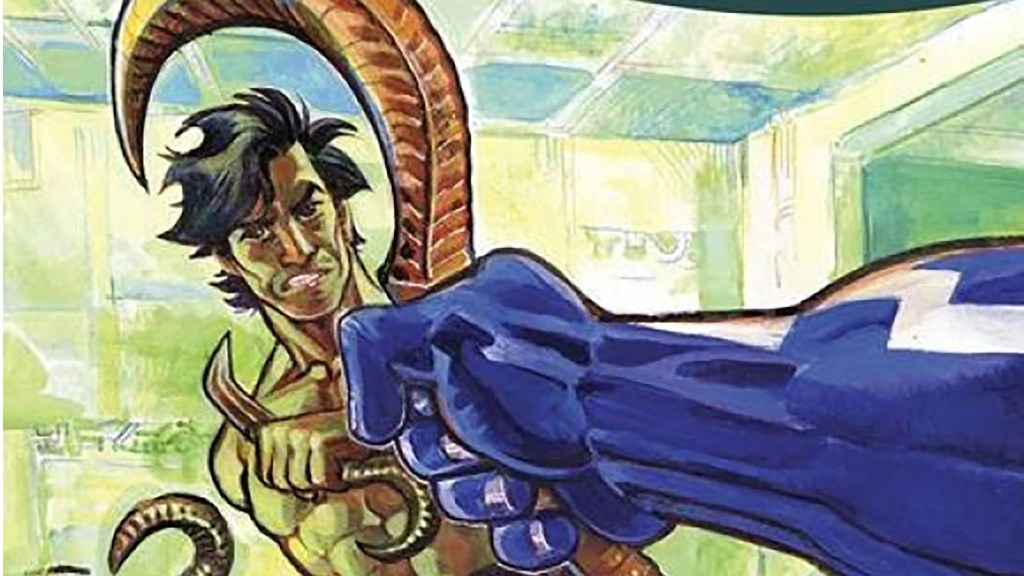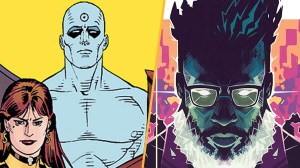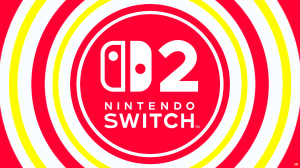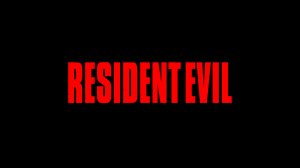Perhaps more than any other genre, sci-fi is full of stories of revolution. It’s the basis of some of our biggest and most beloved franchises — think Star Wars and Dune, even The Hunger Games though it is a bit less sci-fi, for example — where we find ourselves following the story of a group or groups coming together in an act of revolution against a massive, powerful empire figure, a narrative that takes its energy from the idea of the oppressed fighting the oppressor. It’s a story that works but Image Comics’ Free Planet, from Aubrey Sitterson and Jed Dougherty it’s also a story that gets a new angle. The stunning first issue of the series flipped the concept on its head by giving readers not the story of revolution but dropping readers into a tale of “well, now what” with the revolution having already taken place and the ultimate goal reached. Now, with Free Planet #2, not only is the story itself starting to come together but it’s becoming pretty clear that this is a story that has the potential to redefine what we expect from sci-fi revolutions, reminding us in a direct and fascinating way that the revolution isn’t the end and the victors may not always be truly victorious.
Videos by ComicBook.com
The first issue of Free Planet did a lot to establish its world. We were introduced to the various characters in the Freedom Guard that is now here to keep the wheels of total freedom for everyone on the first-ever completely free planet moving. But it also sows the seeds of something greater and it doesn’t take long for the first issue to show the disconnect between the idealized concept of total freedom and the execution of it. Freedom for one looks like oppression for another. How do you balance that? How do you make things equitable? What does it even look like? This is the challenge that the Freedom Guard is thrown into from the jump, not to mention the repercussions of what total liberation means for the world beyond Lutheria. There are economic impacts on the rest of the universe in which Lutheria exists — again, the idea of freedom for one isn’t necessarily good for everyone else. By the end of the first issue, the idea of freedom, that tenuous flip from suppression to protection, starts to feel messy and challenging. It’s a damn good hook.
Free Planet #2 Presents a Hard Reality: Freedom Has an Ongoing Cost
Going into the second issue, the mess and the challenge intensifies when the people decide to add to the Freedom Guard, bringing on a controversial choice. “This is what happens when civilians make military decisions,” one character says of the decision. It’s a notable observation, and one that feels like a snapshot of the situation Lutheria is in: the ideal colliding with reality. Issue #2 sees the Freedom Guard facing the reality that freedom comes with cost — but so does defending it. The question is, is that cost too high and who will ultimately be willing to pay it.
This is the genius of Free Planet as a title and, more broadly, as a concept. While it is on the surface it’s a story of a world embarking on its total freedom and as such, fits into the comfortable revolution sci-fi trope, Sitterson’s writing and Dougherty’s art go well beyond the surface. Like Free Planet #1, issue #2 is incredibly dense with what I can only call narrative elements that deeply explain the world we’re observing. We are given facts and information that may feel mundane, but actually really matter — there are economic details, for example, in addition to current events on other worlds that all inform the pulse of the story and what our characters are dealing with. We also get glimpses of the pasts of various members of the Freedom Guard, humanizing them as characters but also helping readers understand the choices they are making in the present and what their place in this unsteady, infant liberty may really be. There is no corner here unexplored, but also simultaneously not too much is revealed. The mystery remains intact even as the bigger picture comes into focus. In Free Planet #2, that means the issue leaves us with more questions than answers, but also more of a desire than ever to find out what those answers really are.
Free Planet Challenges the Status Quo of Sci-Fi Stories (And Elevates the Comics Format)
Overall, Free Planet is doing something unexpected, especially with this second issue. By taking readers into the story not of a revolution as its happening but the impact of what “successful” revolution looks like – complete with the idea that victory may itself be a form of losing, Free Planet is challenging what stories in the vein of Star Wars tell. Readers are used to having a team of “good guys” to root for as the fight against the “bad guy” empire with the end goal of the nebulous concept of liberty. By taking the fight out of the equation, Sitterson and company have largely eliminated the good/evil dichotomy and instead are embracing a story that is very much gray. It’s a far more interesting approach and the mechanics of how they’re doing it, with detailed world-building that offers up plenty of details without giving away too much makes this a story that goes beyond the comic book format that holds it. Comics are always art, but Free Planet has a weight to it that puts it in the same conversation of other heavies that redefined the format and their genres before them – things like Watchmen and Saga and others.
Free Planet #2: 5 out of 5










